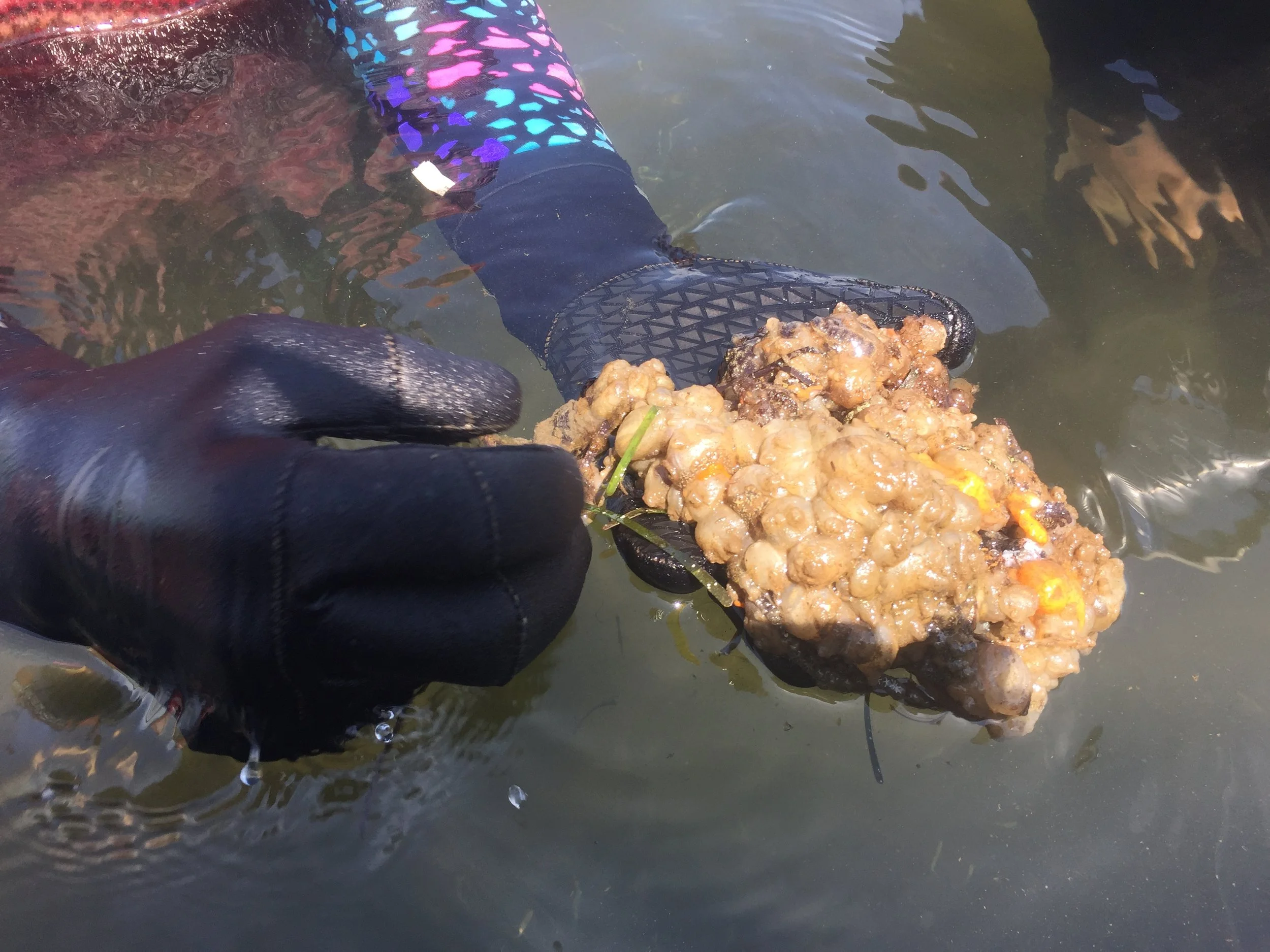NANTUCKET AQUATIC THREATS
The Nantucket Aquatic Threats (NATs) committee exists to conserve native biodiversity through documentation and/or management of exotic invasive and threatening species found in the aquatic environments of Nantucket, Tuckernuck, Muskeget and surrounding waters. Strategic outreach to educate and engage the public is planned for monitoring, documenting and management of exotic invasive and threatening species. The Nantucket Aquatic Threats (NATs) committee is a sub committee of the Nantucket Biodiversity Initiative (NBI).
The committee is currently focusing on detection of non-native marine fouling organisms, in particular tunicates, as well as harmful algal bloom detection. Follow the links below to learn more about aquatic invasive species, marine fouling organisms and algal blooms.
Massachusetts and Nantucket have a number of marine and freshwater invasive plants and animals that were historically not present. Being able to identify these species can help to properly manage them and their impacts.
Non-native tunicates tend to quickly populate and overgrow surfaces, fouling submersed algae, shellfish, rocks, chains and mooring lines. They are easy to find on docks, ship hulls, buoys and aquaculture structures.
While not always invasive, algal blooms can be devastating for aquatic environments. Identifying potential blooms and reporting them is a useful way for citizen scientists to provide useful bloom data.




